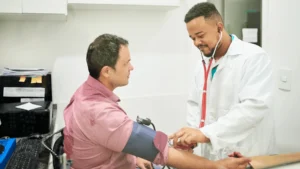Primary Pulmonary Hypertension: Everything to Know About It
Primary pulmonary hypertension (PPH), also known as idiopathic pulmonary arterial hypertension, is a rare and serious condition that affects the blood vessels in the lungs. It is characterized by high blood pressure in the pulmonary arteries, which can lead to heart failure if left untreated. Although the exact cause of PPH is unknown, there are several factors that may contribute to its development. This article will provide a comprehensive overview of the symptoms, causes, diagnosis, treatment options, and outlook for individuals with primary pulmonary hypertension.

Symptoms
The symptoms of primary pulmonary hypertension can be subtle and develop gradually over time. Individuals with PPH may experience:
- Shortness of breath, especially during physical activity
- Fatigue and weakness
- Fainting or lightheadedness
- Swelling in the ankles, legs, or abdomen
- Blue lips or skin (cyanosis)
- Chest pain or pressure
If you or someone you know is experiencing these symptoms, it’s crucial to seek medical attention promptly for an accurate diagnosis and appropriate treatment.
Causes
The exact cause of primary pulmonary hypertension is still unknown. However, several risk factors have been associated with its development, including:
- Genetic mutations: Some individuals may inherit specific gene mutations that make them more susceptible to developing PPH.
- Abnormal blood vessels: PPH can occur when the blood vessels in the lungs constrict or become damaged, leading to increased resistance to blood flow.
- Medical conditions: Certain medical conditions, such as connective tissue disorders, HIV, liver disease, and heart defects, may increase the risk of developing PPH.
- Drug use: Certain drugs, such as appetite suppressants or illegal substances like methamphetamines, have been linked to the development of PPH.
Remember that each individual’s case is unique, and the cause of PPH can vary from person to person.
Diagnosis
Diagnosing primary pulmonary hypertension can be challenging because its symptoms often mimic those of other respiratory or cardiovascular conditions. To determine if an individual has PPH, doctors may perform a variety of tests, including:
- Echocardiogram: A non-invasive test that uses sound waves to create images of the heart to assess its structure and functioning.
- Pulmonary function tests: These tests evaluate how well the lungs are working and can help rule out other pulmonary conditions.
- Right heart catheterization: A procedure that measures the pressure in the pulmonary arteries directly.
- CT scan or MRI: These imaging tests help assess the condition of the blood vessels and rule out other potential causes.
Multiple diagnostic tests may be necessary to confirm a diagnosis and exclude other conditions with similar symptoms.
Treatment
While there is currently no cure for primary pulmonary hypertension, several treatment options are available to manage symptoms and slow the progression of the disease. Treatment plans for PPH typically involve:
- Medications: Various medications can help dilate the blood vessels, reduce blood clot formation, and reduce the workload on the heart.
- Oxygen therapy: Supplemental oxygen may be prescribed to relieve shortness of breath and increase oxygen levels in the blood.
- Pulmonary rehabilitation: This program involves supervised exercise training, education, and support to improve physical functioning and overall quality of life.
- Lung transplant: In severe cases where other treatments have not been effective, a lung transplant may be considered as a last resort.
Treatment plans are tailored to each individual’s specific needs, and ongoing monitoring and adjustments may be necessary.
Outlook
The outlook for individuals with primary pulmonary hypertension varies depending on the stage of the disease, the severity of symptoms, and individual factors. With proper medical care, lifestyle modifications, and adherence to treatment plans, many people with PPH can lead fulfilling lives. However, PPH is a progressive condition, and in advanced stages, it can significantly impact daily activities and overall well-being. Regular medical check-ups and open communication with healthcare providers can help manage the disease effectively and improve the prognosis.
Summary
Primary pulmonary hypertension is a rare and serious condition characterized by high blood pressure in the pulmonary arteries. While the exact cause is unknown, several risk factors have been associated with its development. The symptoms of PPH can be similar to other conditions, making diagnosis challenging. Although there is no cure for PPH, various treatment options are available to manage symptoms and slow the progression of the disease. With proper medical care and support, individuals with PPH can live fulfilling lives. Regular check-ups and communication with healthcare providers are vital for effective disease management.
Remember, if you suspect you or someone you know may have symptoms of primary pulmonary hypertension, it is essential to seek immediate medical attention for a proper evaluation and diagnosis. Early detection and treatment can make a significant difference in improving outcomes and quality of life for individuals with PPH.